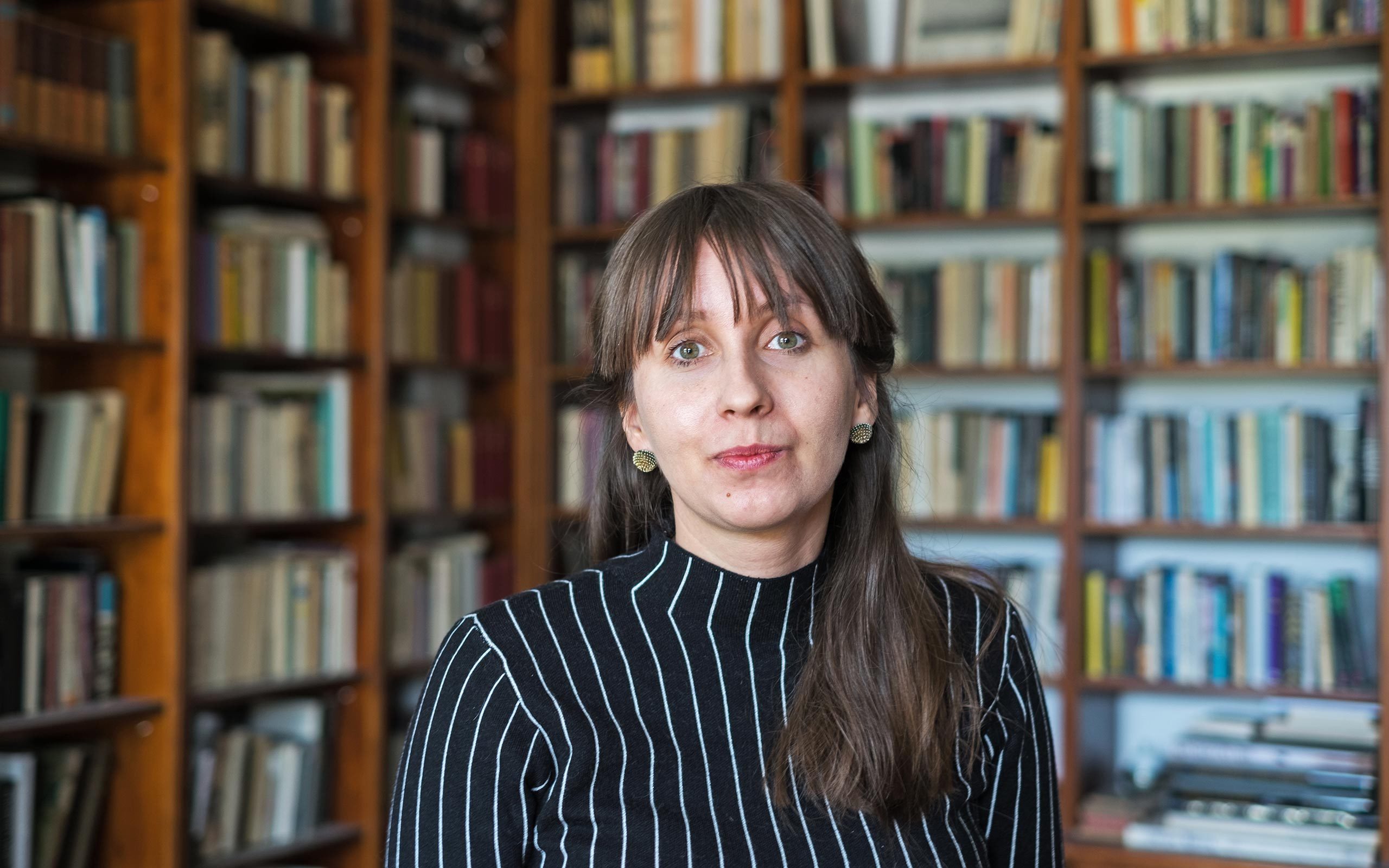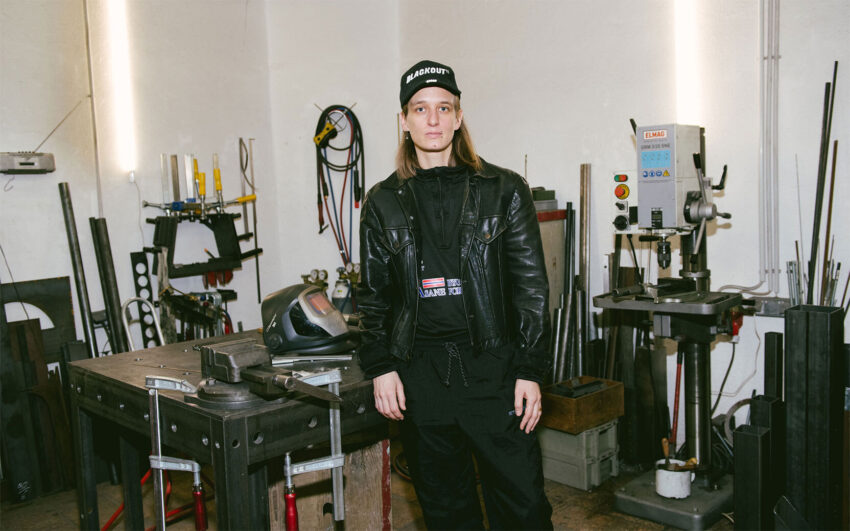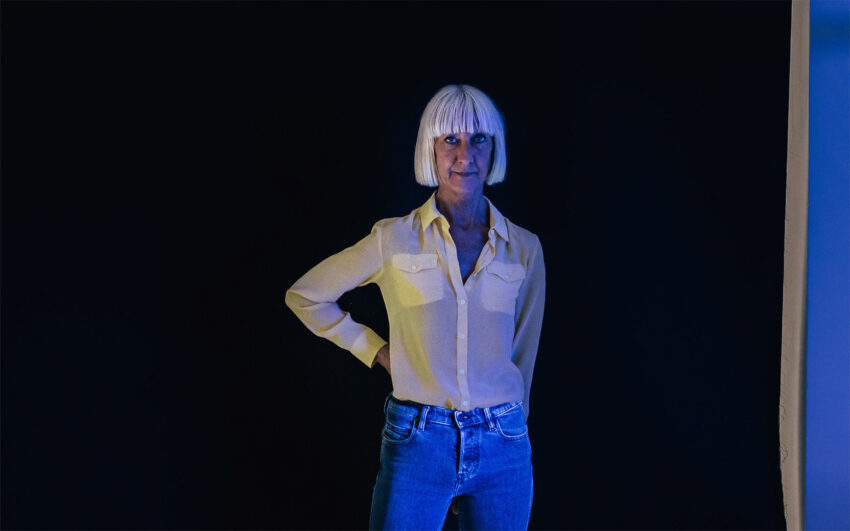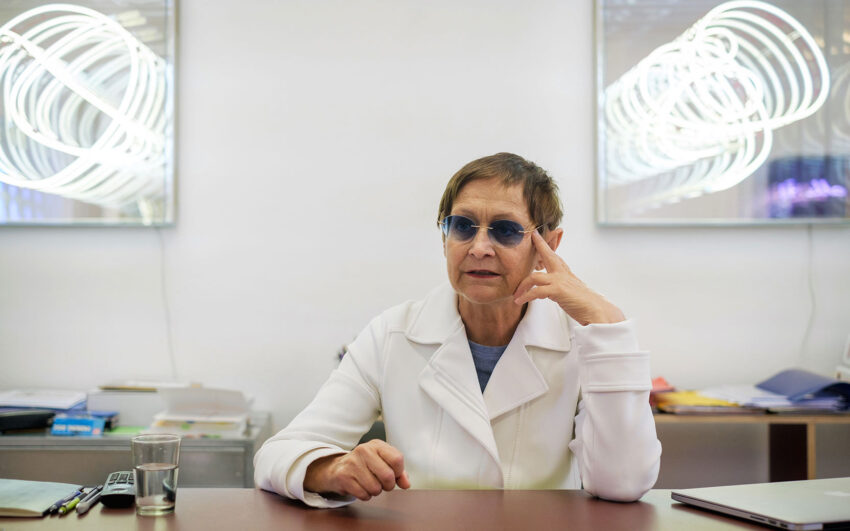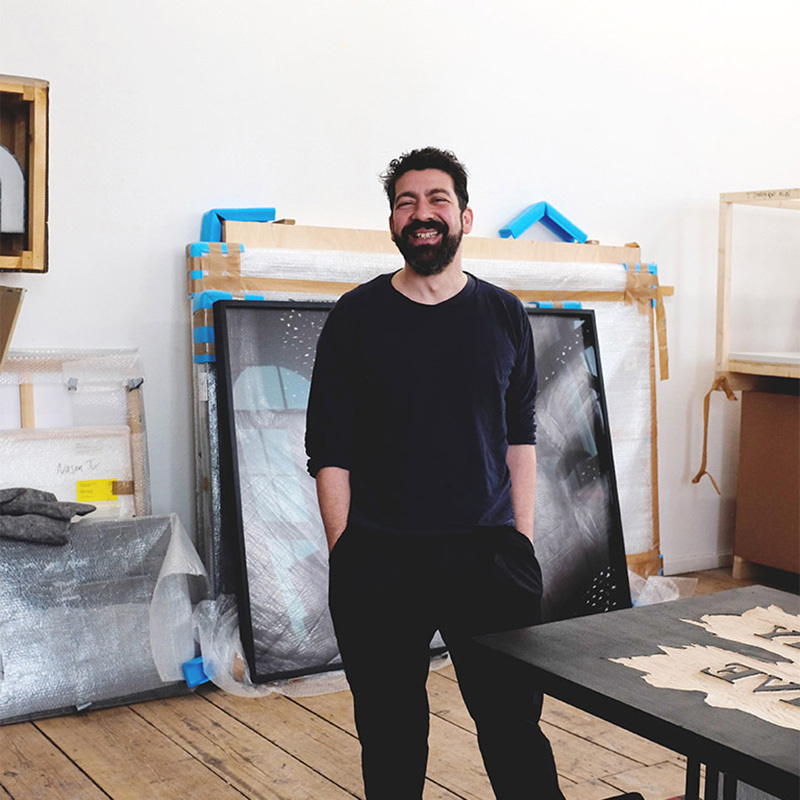Czech artist Eva Kotátková enquires into social structures. Her collages and sculptures amalgamate portraits of anonymous people with depictions of human body parts or objects of daily use into surreal hybrids, which often tell of states of anxiety, control and manipulation. We met Eva in the enchanted home of her parents on the outskirts of Prague and spoke with her about her fascination with the abysses of the human psyche, the influence Kafka and Freud have had on her work, and what she derives from art.
Eva, thank you for inviting us to your parents’ home, Eva. This is a very atmospheric place.
My parents have only recently moved to the house and are only now starting to live here. As you can see everything is still in the process of renovation. I am traveling a lot, but whenever I am working on something, which I can also do here, I come out to see them. It’s great to get away from the city and to get lost in the garden or in the surrounding forests. The house has an interesting history. Ferenc Futurista, a famous Czech comedian and cabaret actor in the 1930s, who was quite a character, has lived here for some time. The house must have been filled with joy and laughter at the time, it gave the house a good aura.
Where do you live and work if you are not out here?
I live in a rather small house in the center of Prague. So when I am there I can only work on a small kitchen table or in other rather improvised set ups. But that’s absolutely okay, because I don’t need a fixed studio space. I pick my work places according to what I am working on.
Where are you creating your huge installations and metal sculptures?
I work at other people’s workshops, if needed, because I can only perform some of the work steps myself. But I want to be involved in the process and oversee the work as much as I can. My drawings sometimes don’t work out in 3D, so I need to adapt the sketches along the way. Some of the metal processing is very delicate, so I need expert help. I’ve working with a metal worker since 2008. We have become very used to each other. He understands my sketches and is able to translate them into 3D. It doesn’t require many words. Due to space limitations, I often end up seeing my large scale and more structured works only in the gallery space. So I have to carry the ideas in my head for quite a while before I can eventually see them realized and installed on site.
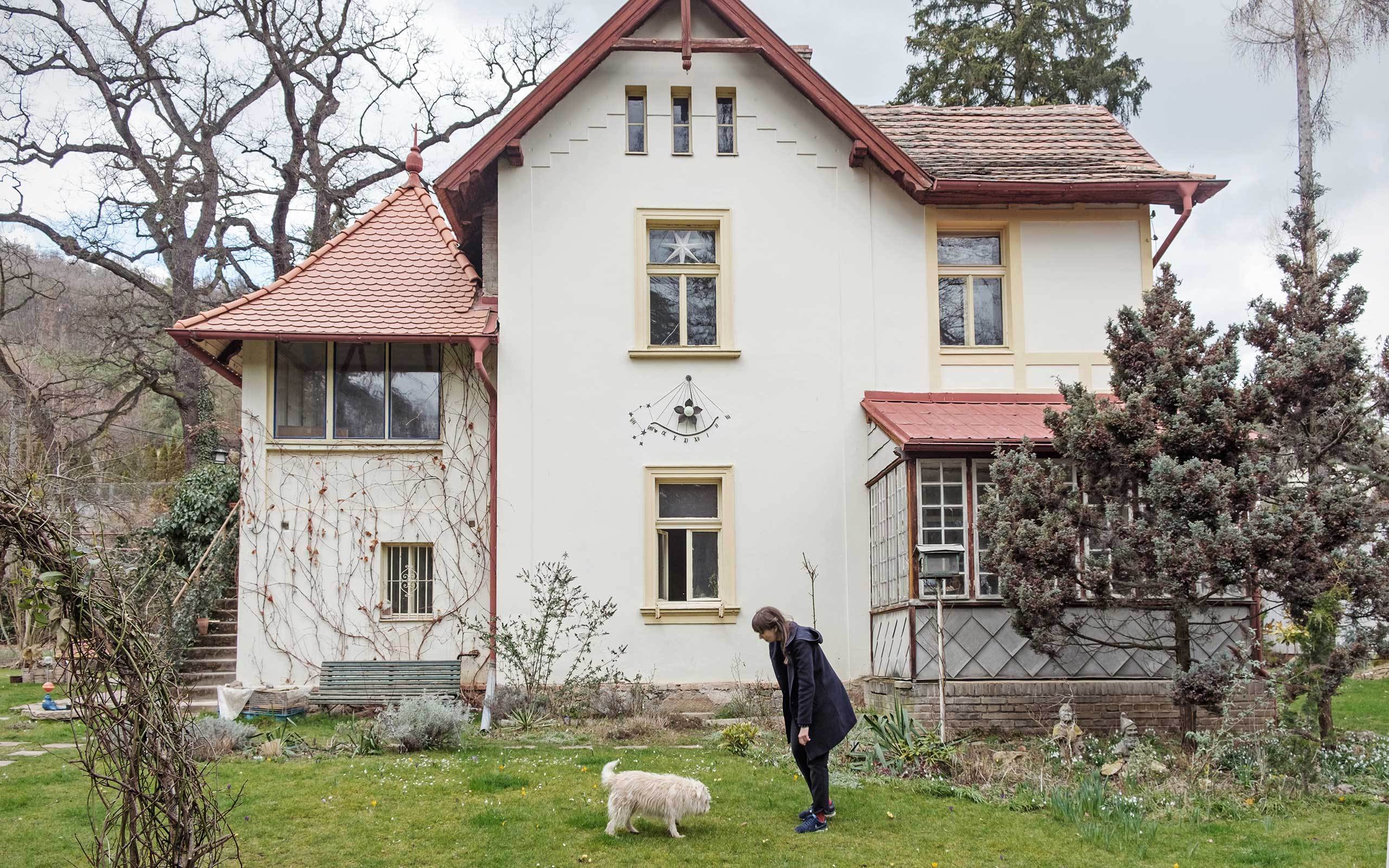
Was it a conscious decision to pursue an artistic career?
It actually came quite naturally, I didn’t think about alternatives too much. To be honest I don’t think I could really do many other things. I don’t have the skills. There are many teachers in my family and I have a huge admiration for this profession.
At the same time in my work I try to show what happens when teachers abuse their role or when educational methods are employed to control or manipulate people. My father who is a philosopher and writer introduced me to many literary works that shaped my outlook on the world. On some works I’ve collaborated with my mother, most recently on a series of puppets. Both my parents have always been very supportive and allowed me to spend big part of my childhood with a sketchbook. Since an early age I’ve been a vegetarian, which I often express in my work when I depict human or animal machines, figures that are blindfolded as if not having to look on the suffering of others.
As you said, you never thought of an alternative to pursuing art. What does it mean to you to be able to create art?
Art provides me with an intimate space, an environment that reflects my character and my way of working. It is also a tool, a mediator through which I can talk to others and share themes that I consider pressing or problematic. I have come to realize that art is my language. Working with images – on paper, but also in the space – allows me to communicate more effectively. I’ve always enjoyed drawing, even before going to highschool, but I soon moved towards integrating more text and physical experience in my work. What I create now is a range of staged situations, structures or spatial collages that always incorporate the body in some ways.
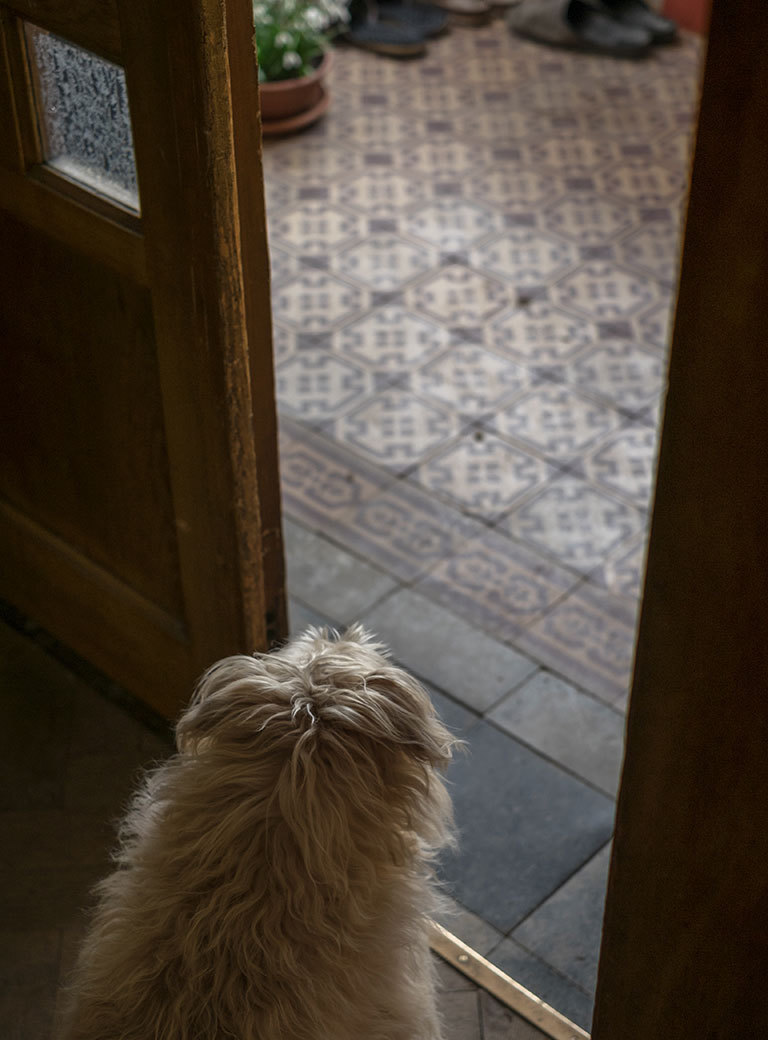
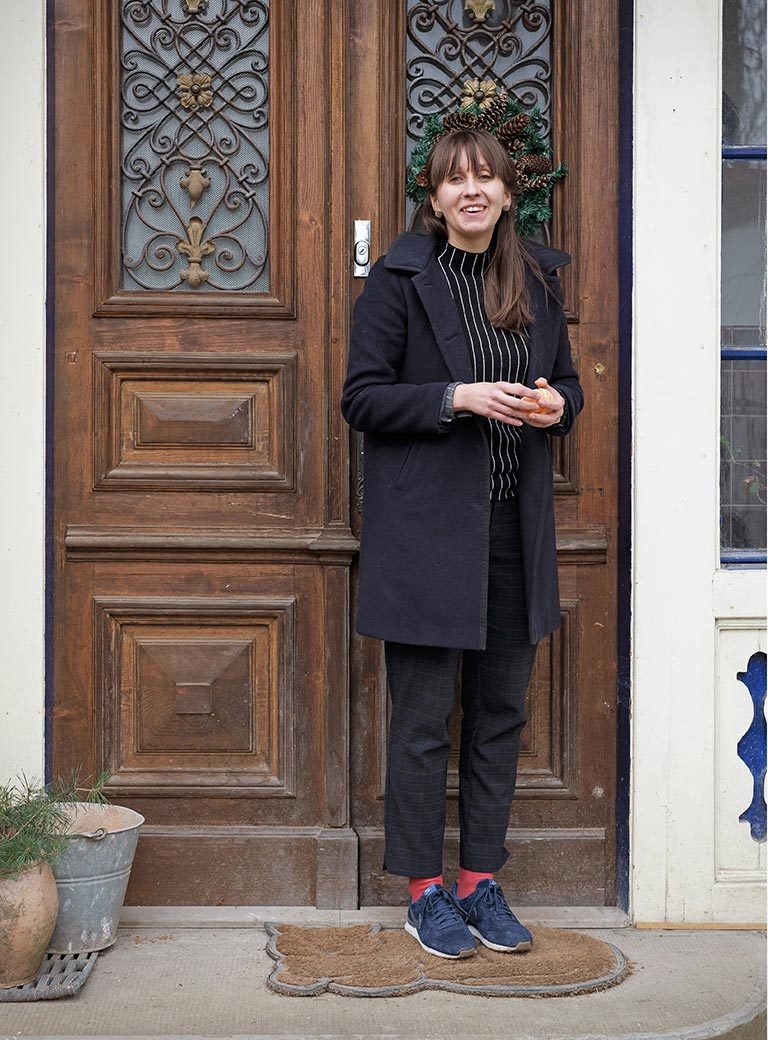
Was it a conscious decision to pursue an artistic career?
It actually came quite naturally, I didn’t think about alternatives too much. To be honest I don’t think I could really do many other things. I don’t have the skills. There are many teachers in my family and I have a huge admiration for this profession.
At the same time in my work I try to show what happens when teachers abuse their role or when educational methods are employed to control or manipulate people. My father who is a philosopher and writer introduced me to many literary works that shaped my outlook on the world. On some works I’ve collaborated with my mother, most recently on a series of puppets. Both my parents have always been very supportive and allowed me to spend big part of my childhood with a sketchbook. Since an early age I’ve been a vegetarian, which I often express in my work when I depict human or animal machines, figures that are blindfolded as if not having to look on the suffering of others.
As you said, you never thought of an alternative to pursuing art. What does it mean to you to be able to create art?
Art provides me with an intimate space, an environment that reflects my character and my way of working. It is also a tool, a mediator through which I can talk to others and share themes that I consider pressing or problematic. I have come to realize that art is my language. Working with images – on paper, but also in the space – allows me to communicate more effectively. I’ve always enjoyed drawing, even before going to highschool, but I soon moved towards integrating more text and physical experience in my work. What I create now is a range of staged situations, structures or spatial collages that always incorporate the body in some ways.
Does your work tend to incorporate more fiction or observations of reality?
I do a lot of research, so the starting point is always something I adopt from reality – a real case, a story I heard or read about, my personal experience, or an observation. Later, during the process, a transformation takes place. I develop my view of something, which often works like a puzzle, a collage of reality and fiction. Sometimes I eliminate parts or I add new elements or move the case or story to a state of abstraction. I don’t really consider it important to offer a key to the work. I believe it is not essential for the viewer to identify what is real and what is added or made up. Important is that the main idea comes across, that the work provokes some feeling, even one that is hard to put into words.
You already mentioned that topics such as abuse of authority, control, and manipulation are present in your work. Which other motifs interest you?
I am interested in the conflict between what’s natural and what’s learned or what is commonly accepted as "normal". I look at the internal and external forces that lead people to behave in certain ways when they walk, speak, or react in various situations, how they are influenced by institutional rules or I try to reveal the intense personal worlds and inner visions that function as parallel worlds which they inhabit. I consider it important to look at the world through the view or experience of those who have for whatever reason been secluded, oppressed, or handicapped in ways that have limited them in their everyday functioning and prevented them from being fully integrated. That is the concept of some of my works, the Theatre of speaking objects for example, which uses objects as mediators for people with different communication problems.
A well-known work of yours is a film about an imaginary tribunal.
This is a rather recent work and hasn’t been shown much yet. But yes, it is based on the story of Jakob Mohr, a psychiatric patient, who went through a hallucinated court trial that was going on merely in his head. Jakob would not stop talking about an "influencing machine" representing to him everything institutional and restrictive. The drawings he produced for him were less an artistic expression, but rather an attempt to prove the existence of both a big conspiracy and the existence of a strange machine through which Mohr explained and excused his actions. He believed that everyone in the clinic, doctors and patients alike, were against him and that the machine influenced and controlled all his actions. My work is actually a 3D walk-in paper collage, in which actors perform under constraints, because the logic of the drawing limited their movements and gestures turning them into strange marionette-like creatures. At the performance, some of the actors where patients and staff of the psychiatric clinic Bohnice in Prague, some were real actors.
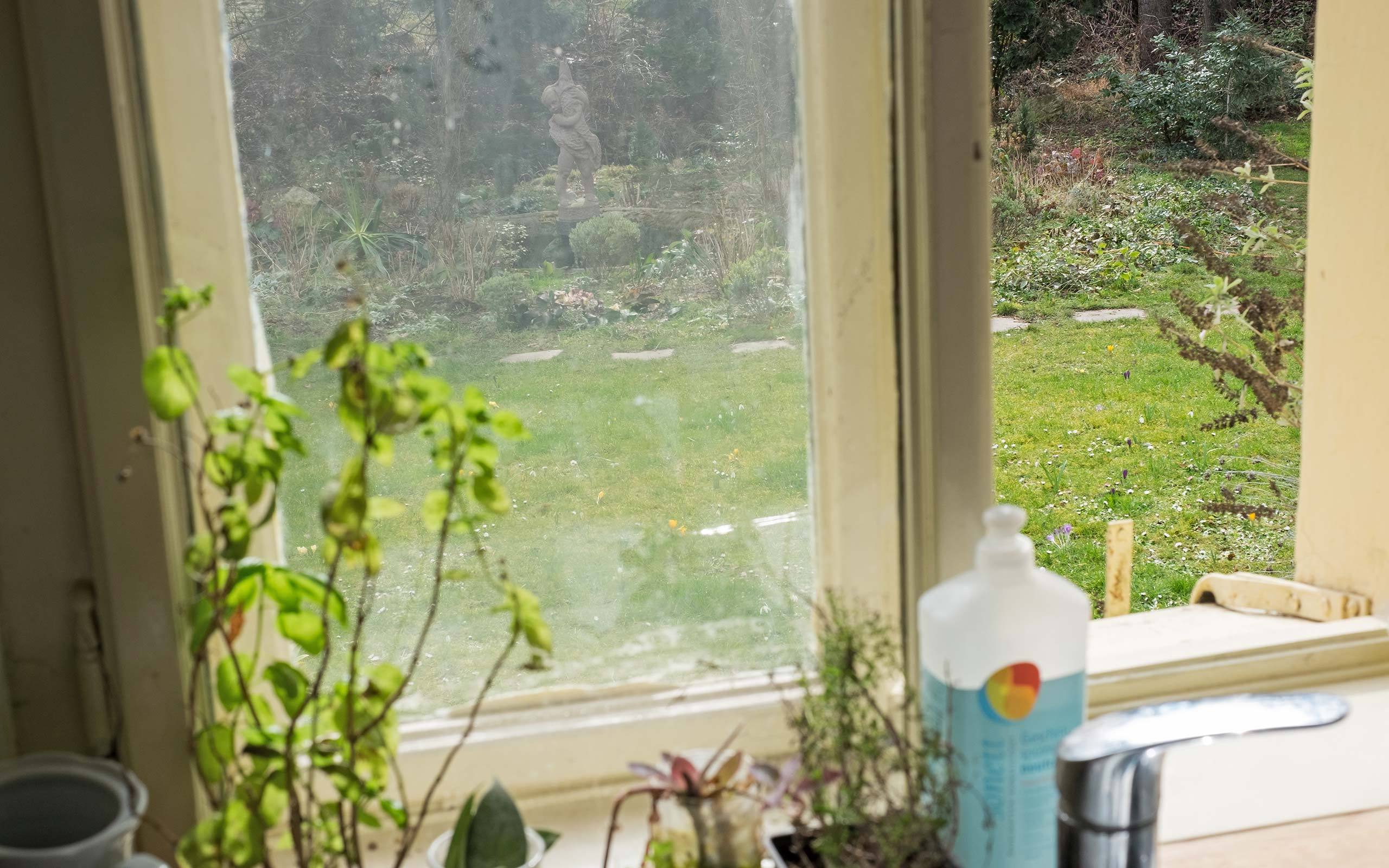
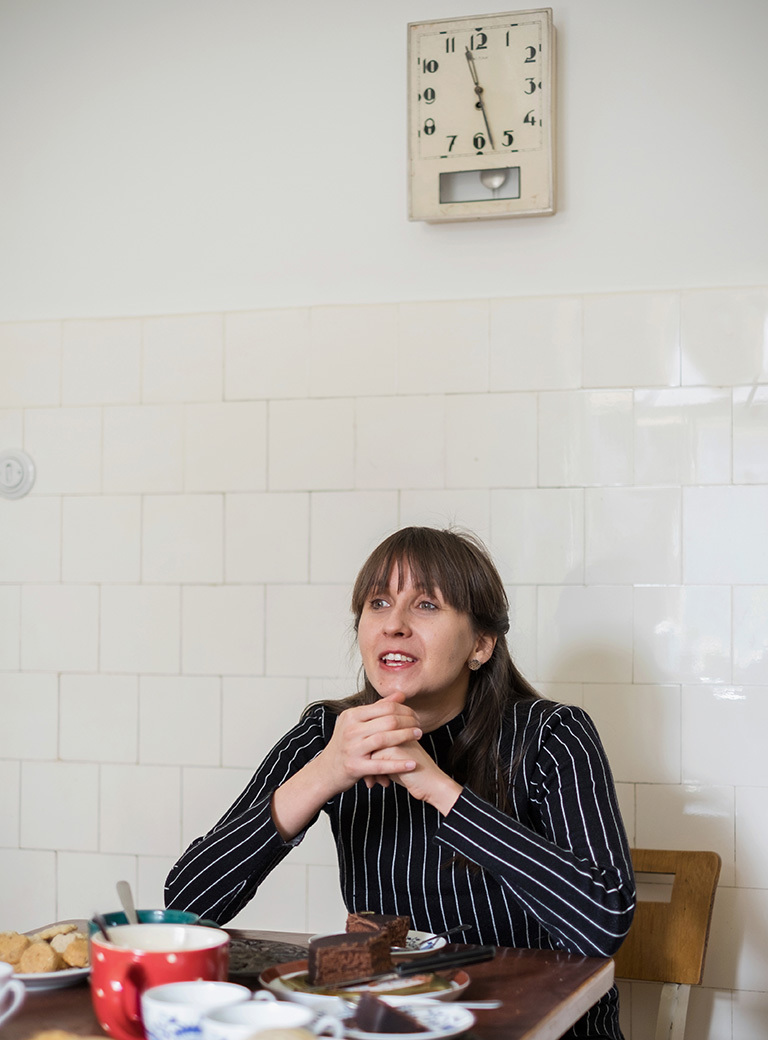
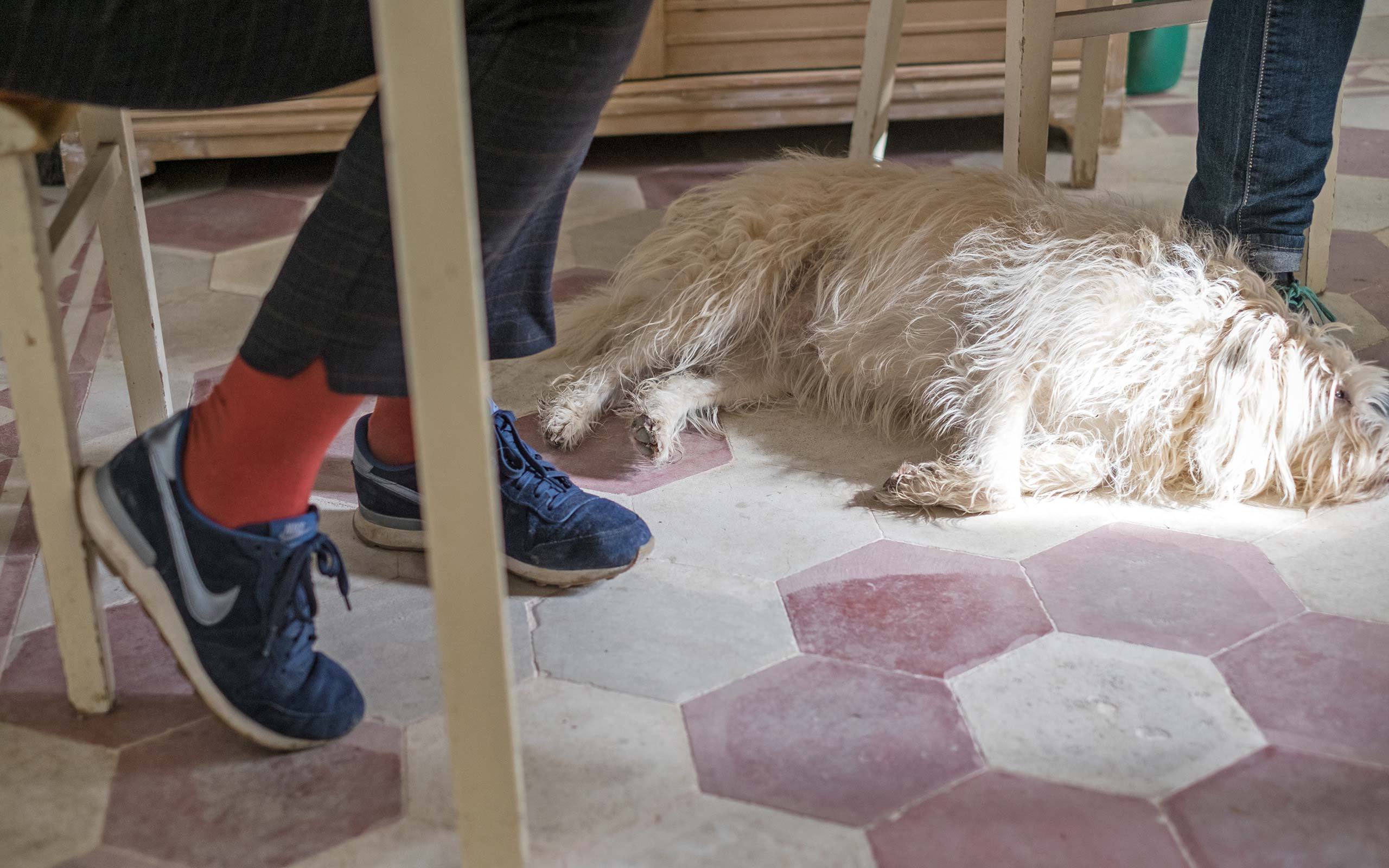
Many of your works evoke the feeling of something subliminal. One seems to be able to discover a kind of morbid truth below the surface, something no one likes to talk about.
I believe most artists try to reveal what is hidden, invisible. One of my important motifs is a cage and a body that’s being dismembered. While for me the motif of the cage represents hidden imprisonment, restrictions, and rules, that one can’t see, but to which one obeys, the motif of the fragmented body represents a situation in which a person cannot maintain his/her ability to function and act coherently under the pressures, demands, and horrors of the surrounding world.
I am also interested in the notion of anxiety or anxious states of the mind manifested through the body as well as through tools or means that should hold it under control. So, rather than morbidity, it is probably the idea of suppressed or withheld anxiety, which shows subtly through gestures or actions, until it breaks out.
You recently had a major show at Maccarone gallery in New York, where one central motif of the works on exhibition where such states of anxiety.
That’s right. As a point of departure for that exhibition I used drawings and writings from a workshop I had done with children with mental disorder. The drawings represent various states of anxiety of the children or reflect the situation they endured at the clinic. For example, one drawing shows two people on the phone, of which one hangs up making the other one feel isolated and talk to him/herself. Another repetitive element in the drawings are snakes, some of which appear friendly, but many of the children’s pictures show snakes eating or digesting children, buildings, or other animals. The show also presented a metal sculpture en titled a mouse’s home is the snake’s body inspired by some of these drawings. I wanted to examine the relationship between the victim and the predator who dominates the situation, but also show the ambivalence of the situation, because the mouse could either take control over the situation or inhabit the snake’s body like a saving shelter, as if it would want to hide from even bigger horrors that are happening in the world.
A mouse in a snake’s body… One cannot help thinking about Kafka. Is it correct to assume that Kafka has strongly influenced your work?
It is obvious that Kafka has greatly influenced my work, yes. My father is a big admirer of Kafka and I share his excitement completely. I have been reading his novels repeatedly over time. But I wouldn’t put Kafka in direct relation to my work. I would say it is probably more of a subconscious influence. However, there is one short story by Kafka that has particularly fascinated me. It is called The Burrow and tells of a mole-like creature, which burrows through a system of tunnels and creates trapping devices for other creatures. This story is about captivation and survival, with the creature being both the snake and the mouse at the same time. This is how nature functions. You can never be sure of your role in the horrifying system.
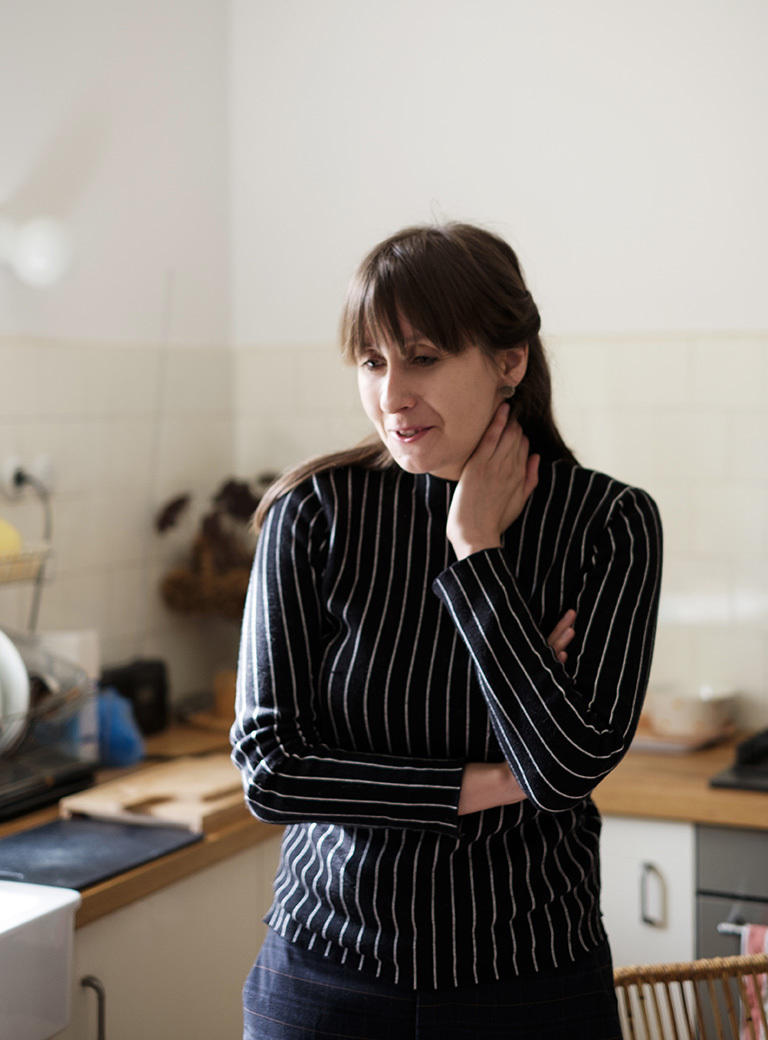
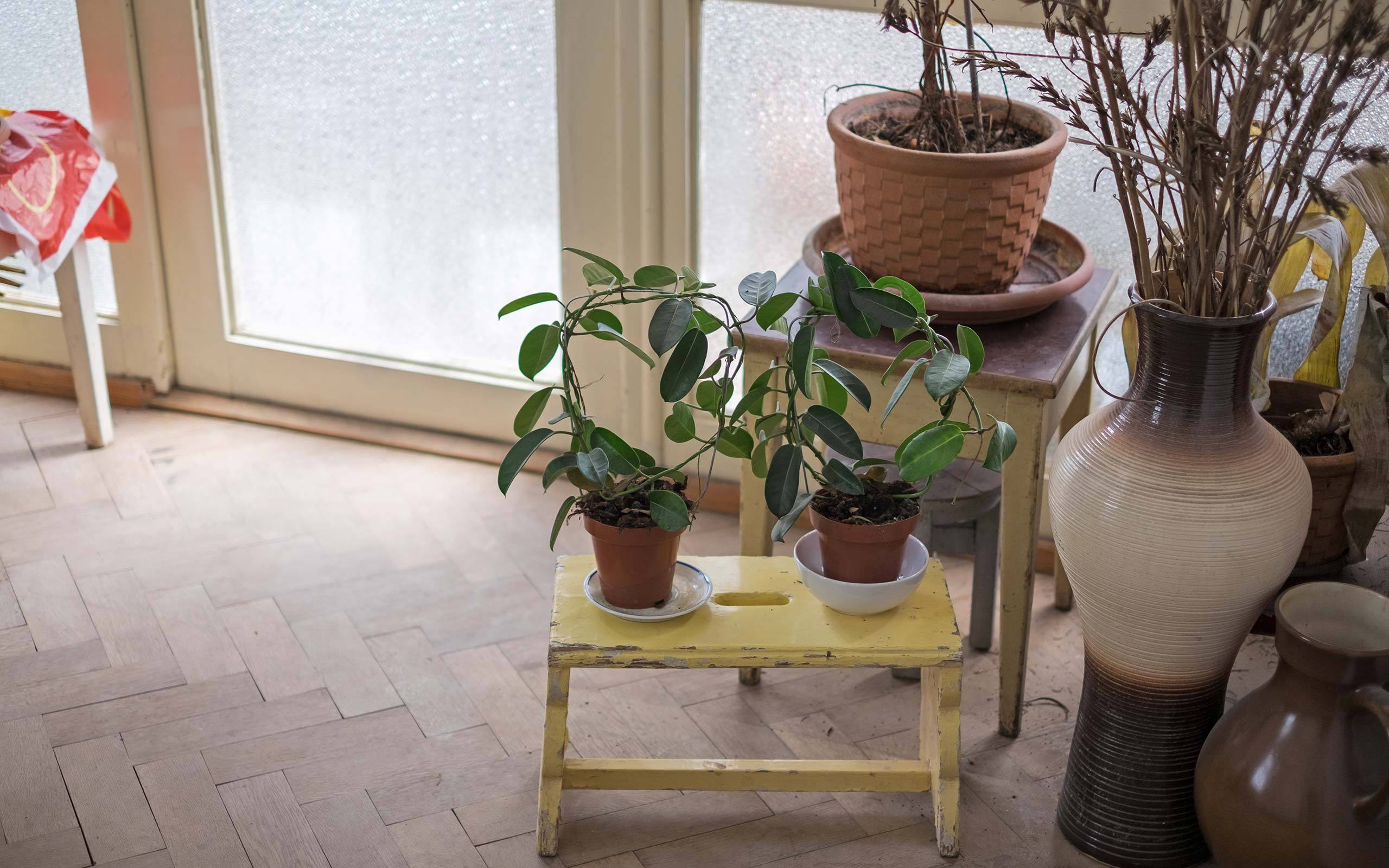
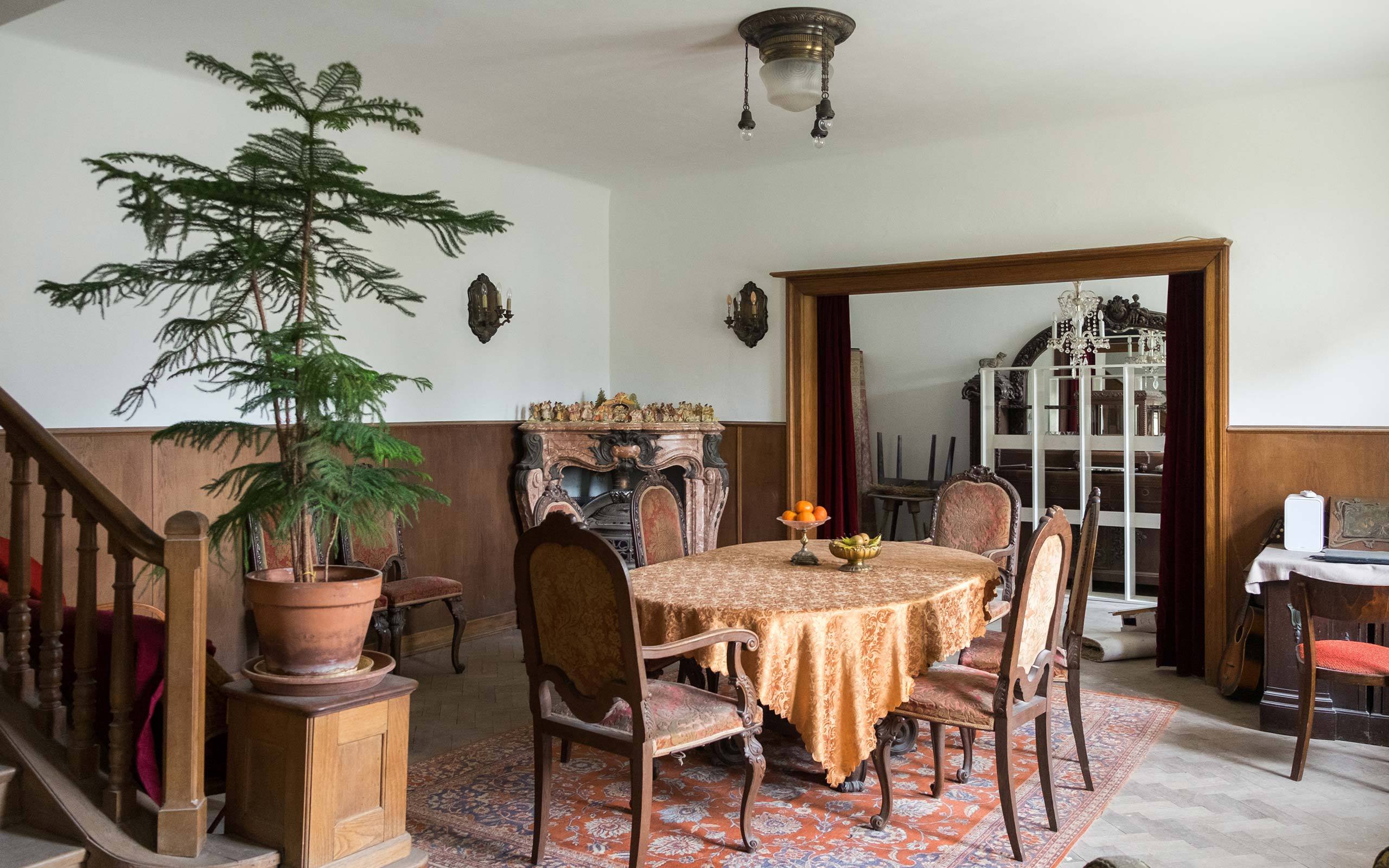
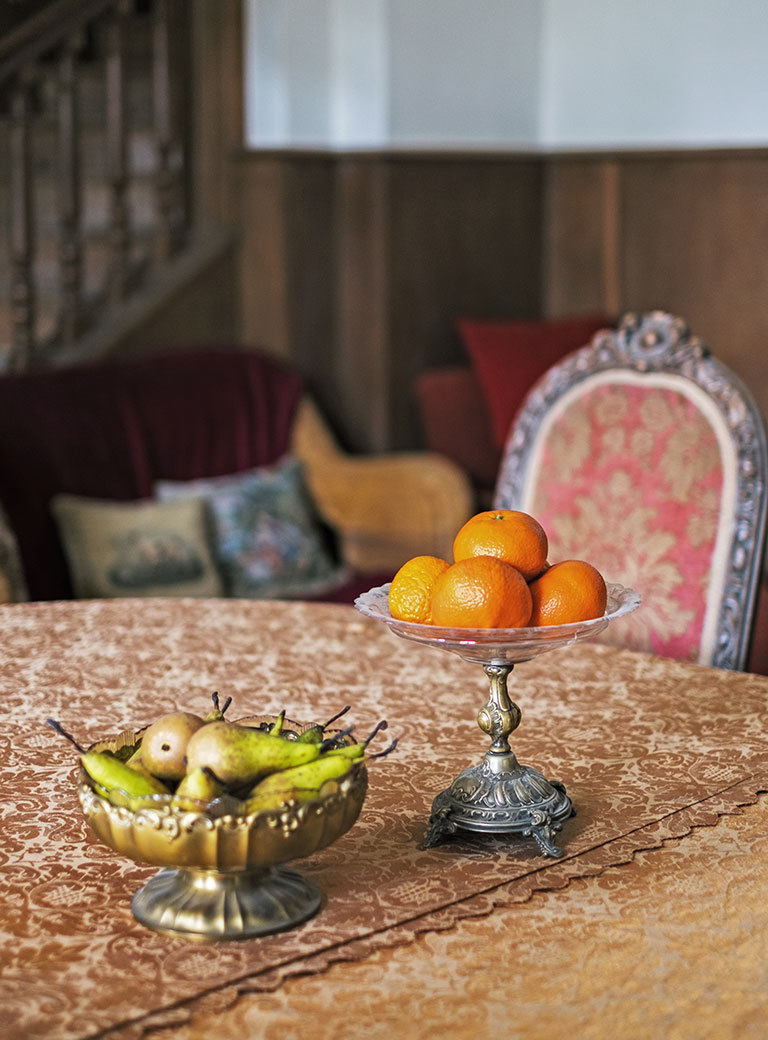
Might one say that your work is about escaping the "system”?
Oh no, that would probably be too assumptive. I do not create instructions. I talk about the system, about how limiting it can be, if it is not adapted to people’s real needs, and how hard it is to evade it when you are part of it. And I showcase alternative scenarios, which can be surreal as they are impossible to be realized. But what they do is they point out a possibility to look at a situation differently.
Which reactions do you observe in people who view your work?
You know Kafka was considered a humorous writer by some of his contemporary fellow writers in Czechia. The tragic element, the despair that permeated his work, was overlooked for a long time. I don’t perceive him as a humoristic author at all. I say that because I struggle sometimes with how people interpret my work. For example I made this work series entitled Home Detention – about a boy who is trapped in a metal construction, his head turned upside down. It symbolized isolation in a limiting space and talked about the invisible cage, which we carry around with us. To some people it felt like an acrobatic funny picture. But such reactions are important for me as they make me think about how I could mediate the idea differently, more successfully.
You studied in Vienna. Now, this may sound a bit trite, but, aside of Kafka, could there also be an influence by Sigmund Freud’s psychoanalytic theories on your work? Probably not. I find him fascinating to read, but from a position of a woman I couldn’t identify with him, as he was the one who has been categorically excluding female cases in his research, as he considered women subordinate to men. I am probably more attracted by reading other psychoanalysts such as Melanie Klein or even Anna Freud as I am particularly interested in children psychoanalysis. But there are many other influential texts or theories such as Paulo Freire and his Pedagogy of the Oppressed, Augosto Boal and his Theatre of the oppressed, also Moreno’s Psychodrama techniques and the famous and revolutionary Franco Bassaglia’s law that helped to ultimately close the clinics.
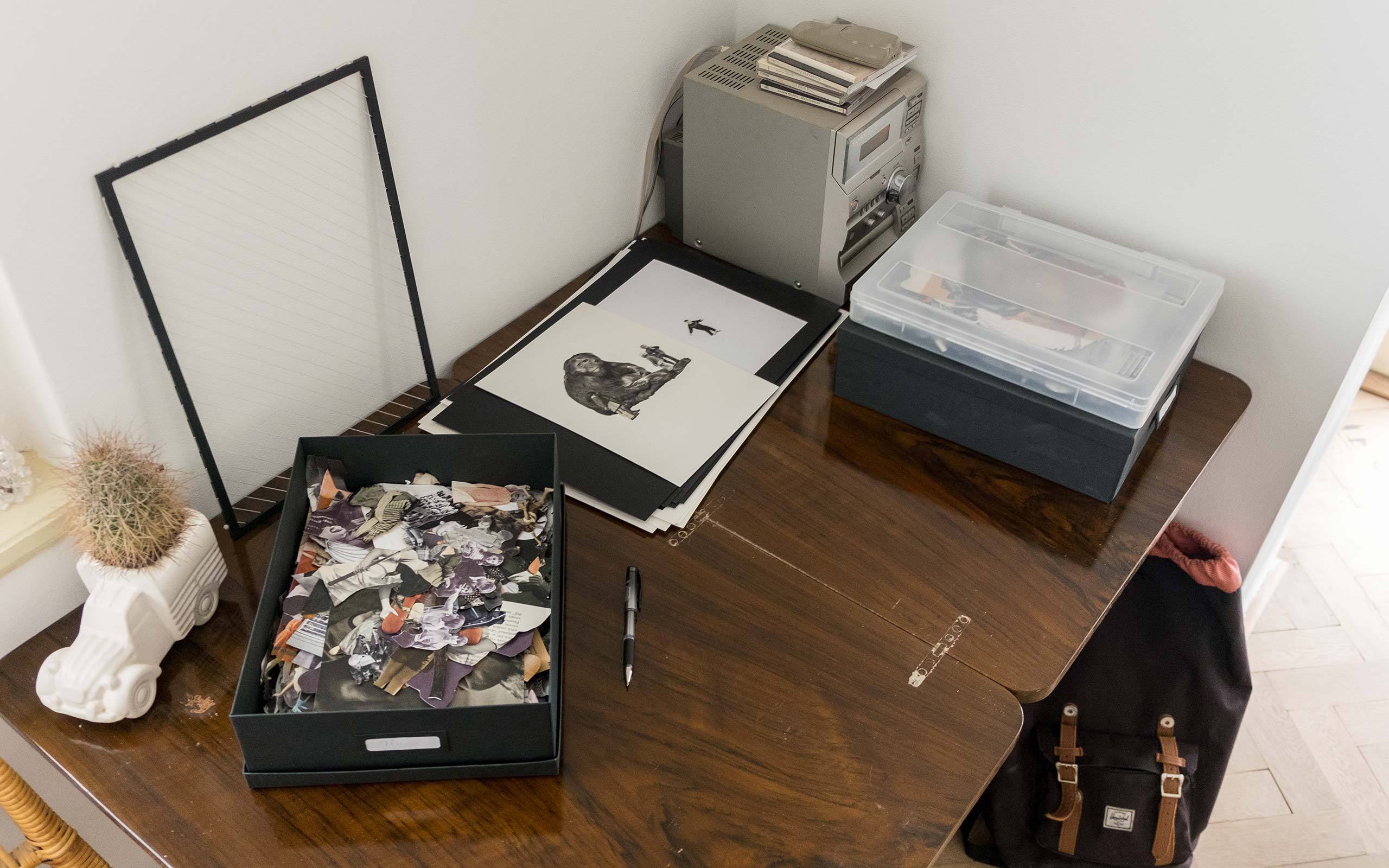
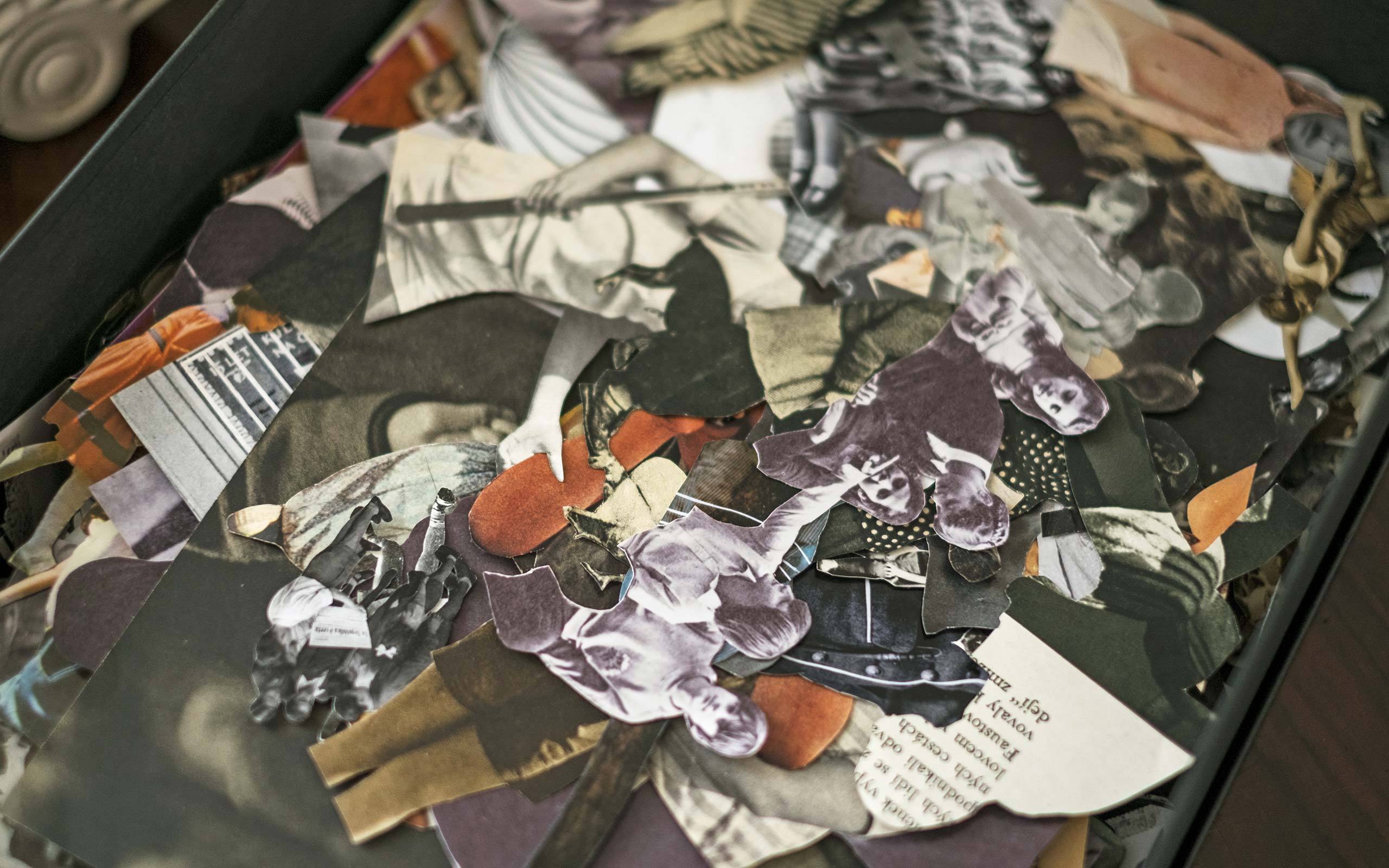
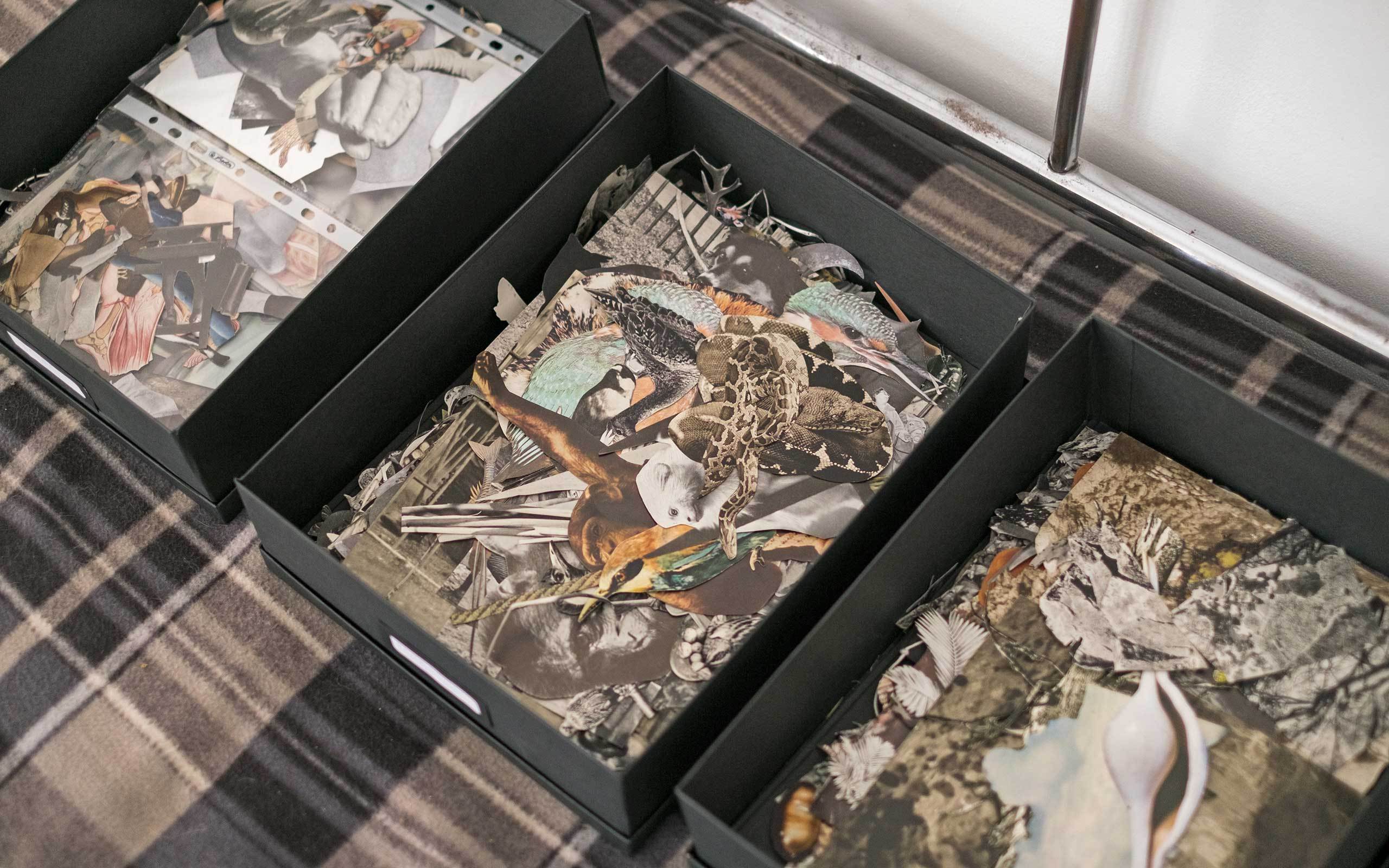
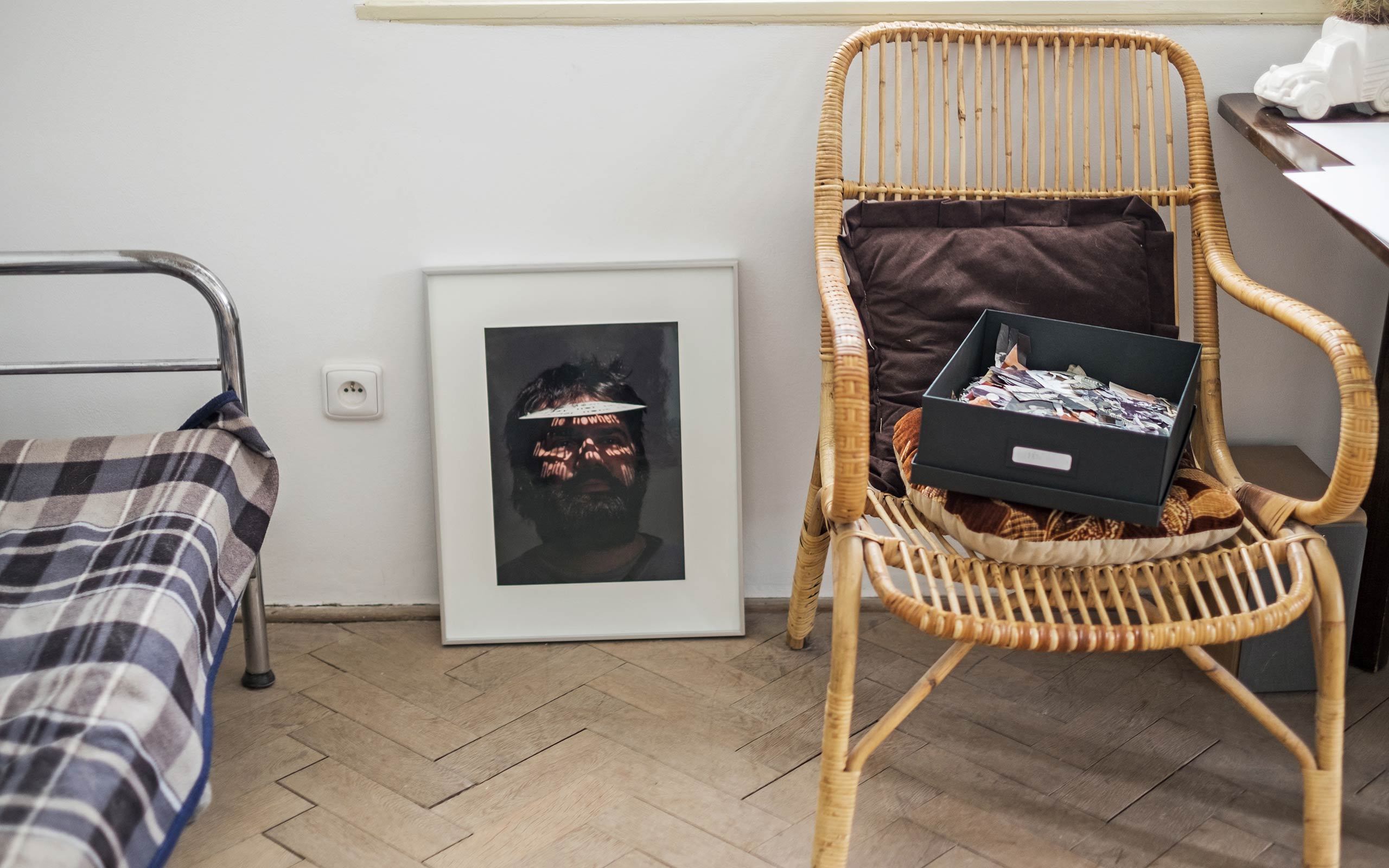
Adjacent to the kitchen, is a desk with lots of papers and paper cuts. What are we looking at here?
That’s a new series of works, for which I am using cut-outs that I am reassembling in a new context. They are not finished yet. I will still need to draw on them. I have categorized the collected pictures in different boxes. These for example are the children pictures, or rather body parts of children. Here we have only heads. I don’t want to imagine what impression someone gets by just looking at my inventories without any explanation (laughs). Here are more boxes with cut-outs of animals like snakes, monkeys, or birds, and their cages. Some of them are really bizarre. My mom sometimes helps me to cut out these motifs, or we do it together. It is truly nice to be doing something together and spending time with each other. Such manual work can be very therapeutic, but also social when you do it with someone else.
That is a really huge collection of cut-outs, neatly categorized. Where do you get the material from for your collages?
Mostly from old books, including specialty books for psychology and psychotherapy from the 30s until the 80s, but also old school books. Owners of some of the antique bookshops in Prague know me already. There is an old lady in the old town who owns a beautiful small bookshop. She sits in the middle of the shop, surrounded by piles of old books. Many of the books that I am looking for are no longer sellable, but she knows that I have use for them. So she keeps them for me and sometimes even gives them to me for free. But it is becoming harder and harder to find older books from this field that I don’t have already. This means that I have to either change the content and style of the collages or stop with them completely for a while.
Czechia, where you were born, is not a huge country. On the other hand some artists of your generation are pointing the way for contemporary art internationally. Could you tell us a bit about the art scene in the Czech Republic? Well, it is one of the countries of the former Eastern Block. There are still artists from the older generation who haven’t gotten their chance to receive international public attention. Their works are still waiting to be discovered, it is partly a hidden generation. I strongly feel that it is unfair to them but I still, maybe naively, believe that a good work does not get forgotten, even if it is discovered with a big delay. Even though the scene is small, it is very diverse and vibrant and I think that there are several very interesting artists here from the younger generation. Since we are not one of the artistic centers and because the time of curators who come here from abroad is often limited they tend to focus their attention on what they have already seen in international shows. Not too many of them can afford to spend the time it would take to learn more about the scene at a national level and to discover someone whose work has not yet been shown that much. But, to the degree the institutional support is improving, more and more artists receive the chance to get involved in shows, or to be represented by a commercial gallery.
Do you personally see a specific role for an artist in a society?
I think that an artist should be seen as an integral part in society. How much of an impact an artist can really make depends on the environment and the conditions under which he or she operates, and of course on his ability, originality and urgency to talk about something to people. Generally speaking, I don’t think the profession of an artist should be regarded in any way unique or elevated on a pedestal. In a way an artist’s job is like any other. It is true that an artist is a person who applies specific skills and sensitivity. But everyone is born with certain skills and, if one is lucky, one gets trained to refine and use them as best as possible. Having said that, I do believe that an artist’s skill is to bring attention to certain, more hidden and problematic aspects of the world and to look at them differently. To not take things as rigid, unchangeable concepts, unbreakable structures. If an artist succeeds in doing this he or she contributes something of real value, because it can change things in people’s minds. I have been to some shows, at which I had this profound experience of being truly shaken up. I really believe in the power of art. But I also believe it should be used for something good.
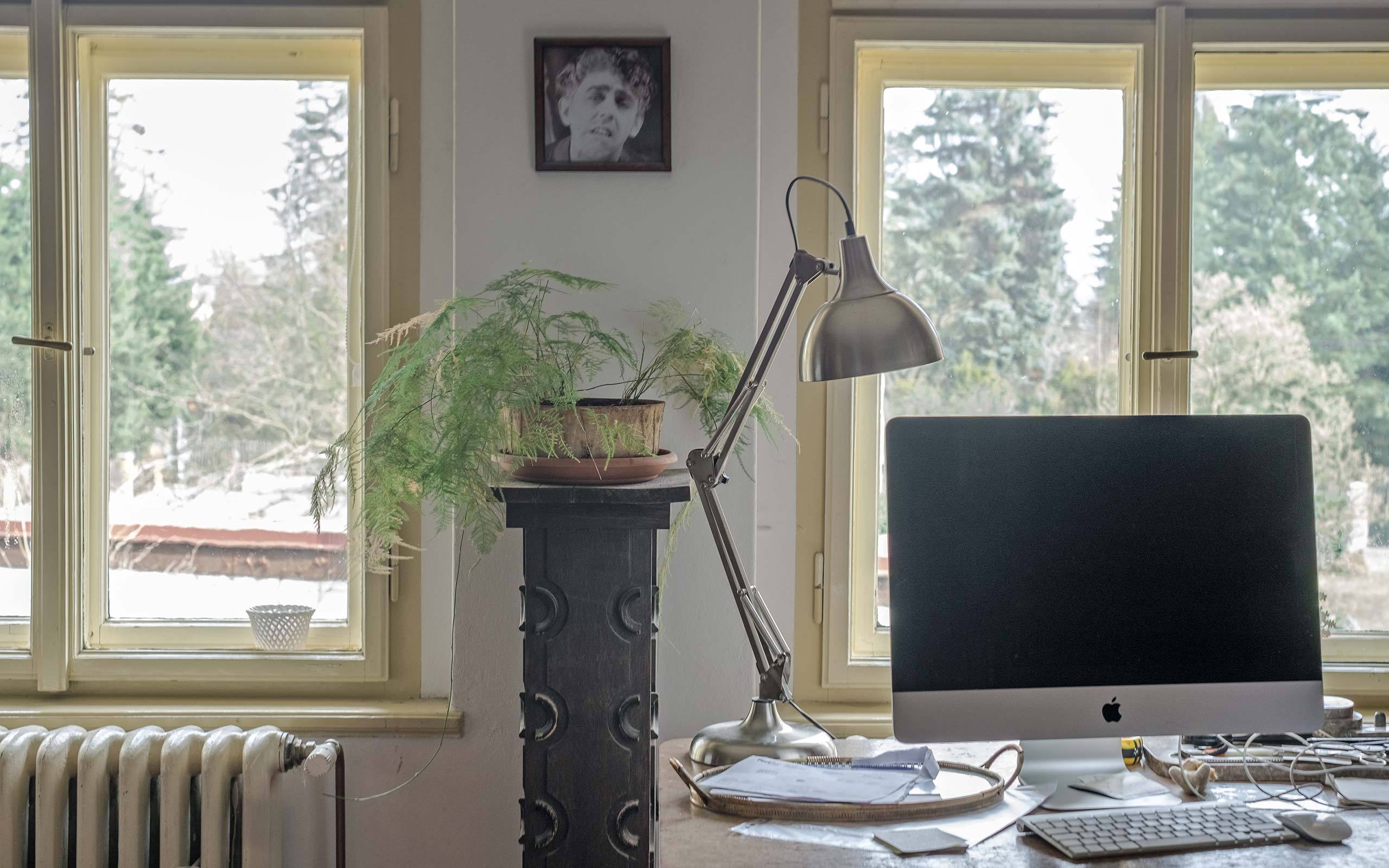
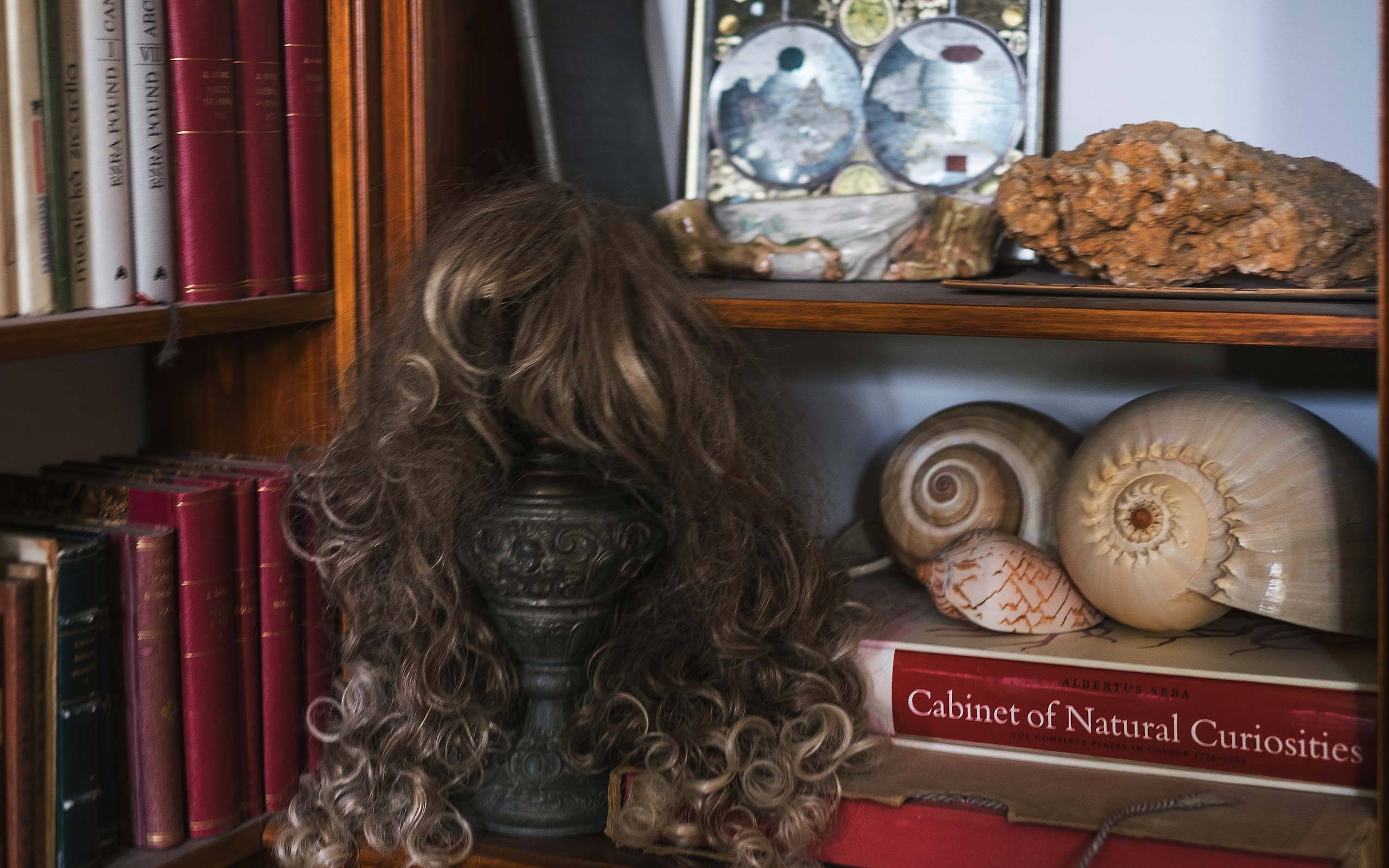
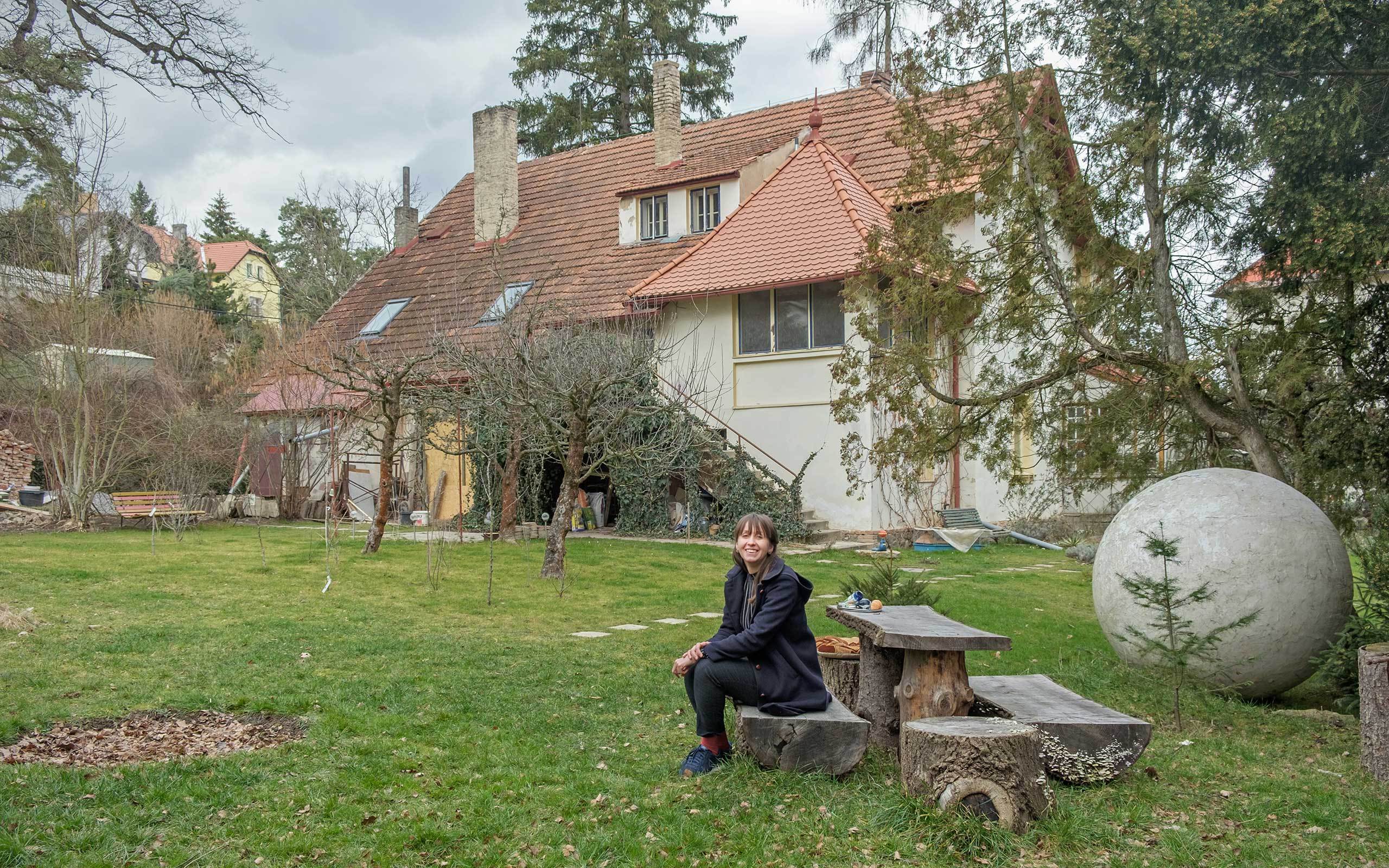
Interview: Michael Wuerges, Florian Langhammer
Photos: Maximilian Pramatarov


